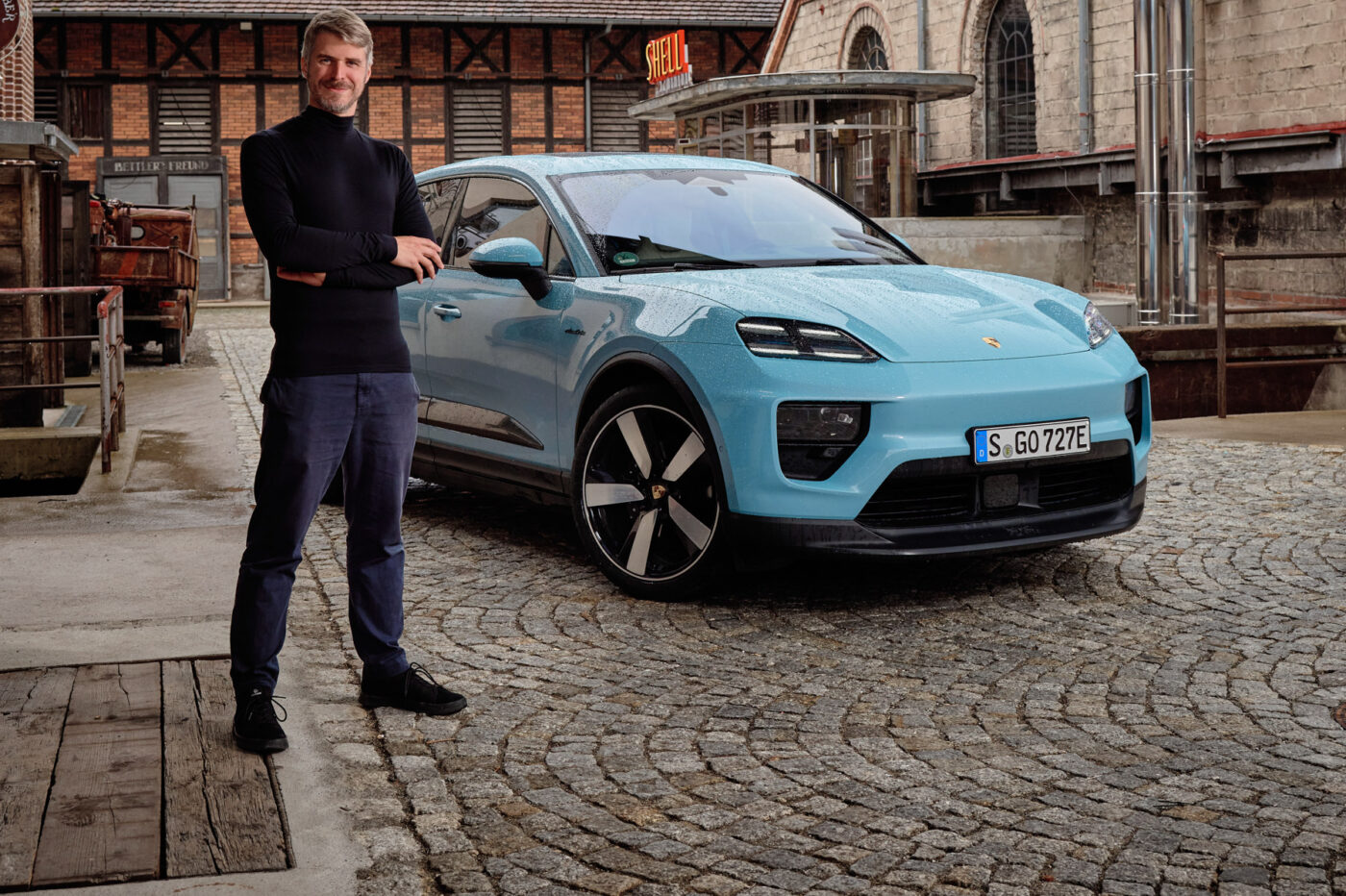
Porsche Macan driving report: Is the base model enough?
First things first: At this point, we do not know how much Porsche you will get for the entry-level price of 80,700 euros. The test car was equipped with numerous options from the still long list of extras (and extra charges), which pushed the price up into the six-figure range. Those reluctant to tick the boxes for the expensive options can order a Macan for less than 95,000 euros – and would still benefit from the full electric discount for company car taxation.
But what is available for those 80,700 euros plus extras? Porsche’s base model also has a 100 kWh battery in the underbody, of which 94.9 kWh can be utilised. As the Macan does not get a suffix, we can rule out the smaller 83 kWh gross/75 kWh net battery that Audi offers in its Q6 e-tron PPE model. The Macan thus offers the same energy content as its all-wheel-drive brothers, even in the most affordable version, and the same charging power of up to 270 kW.
The drive system is based on the Macan 4, presented at the world premiere in January – albeit without the second electric motor on the front axle. The permanently excited synchronous electric motor (PSM) has an active length of 200 millimetres and a diameter of 210 millimetres. Together with the pulse inverter designed for 450 amps, the motor has an output of 250 kW (265 kW in overboost) and a torque of 563 Nm.
Porsche wanted to develop the sportiest SUV in the segment
In times when 400 kW or more is not uncommon for electric cars, it sounds like a relatively manageable performance. However, with a top speed of 220 kph and 5.7 seconds for the sprint to 100 kph, the entry-level Macan is well in line with the competition. Its Audi counterpart, the Q6 e-tron Performance, takes a whole second longer to reach 100 kph and is ten kilometres per hour slower at top speed. And if you look at the bestseller in the segment, the Tesla Model Y, the Macan sits between the rear-wheel drive model with a large battery (5.9s; 217 kph) and the all-wheel drive model (5.0s; 217 kph) – with the difference that the Tesla is almost 30,000 euros cheaper. With a WLTP range of up to 641 kilometres, the Porsche is on par with the Q6 e-tron but ahead of the Model Y (600 km for the rear-wheel drive model). However, the two PPE electric cars need a battery that is around 20 kWh larger to beat the Tesla. The Q6 e-tron with the smaller battery achieves a range of 533 kilometres.
However, we don’t want to compare models on paper but want to look at their performance on the road. When developing the new Macan, Porsche aimed to develop the sportiest SUV in the segment. A goal that will become important later on.
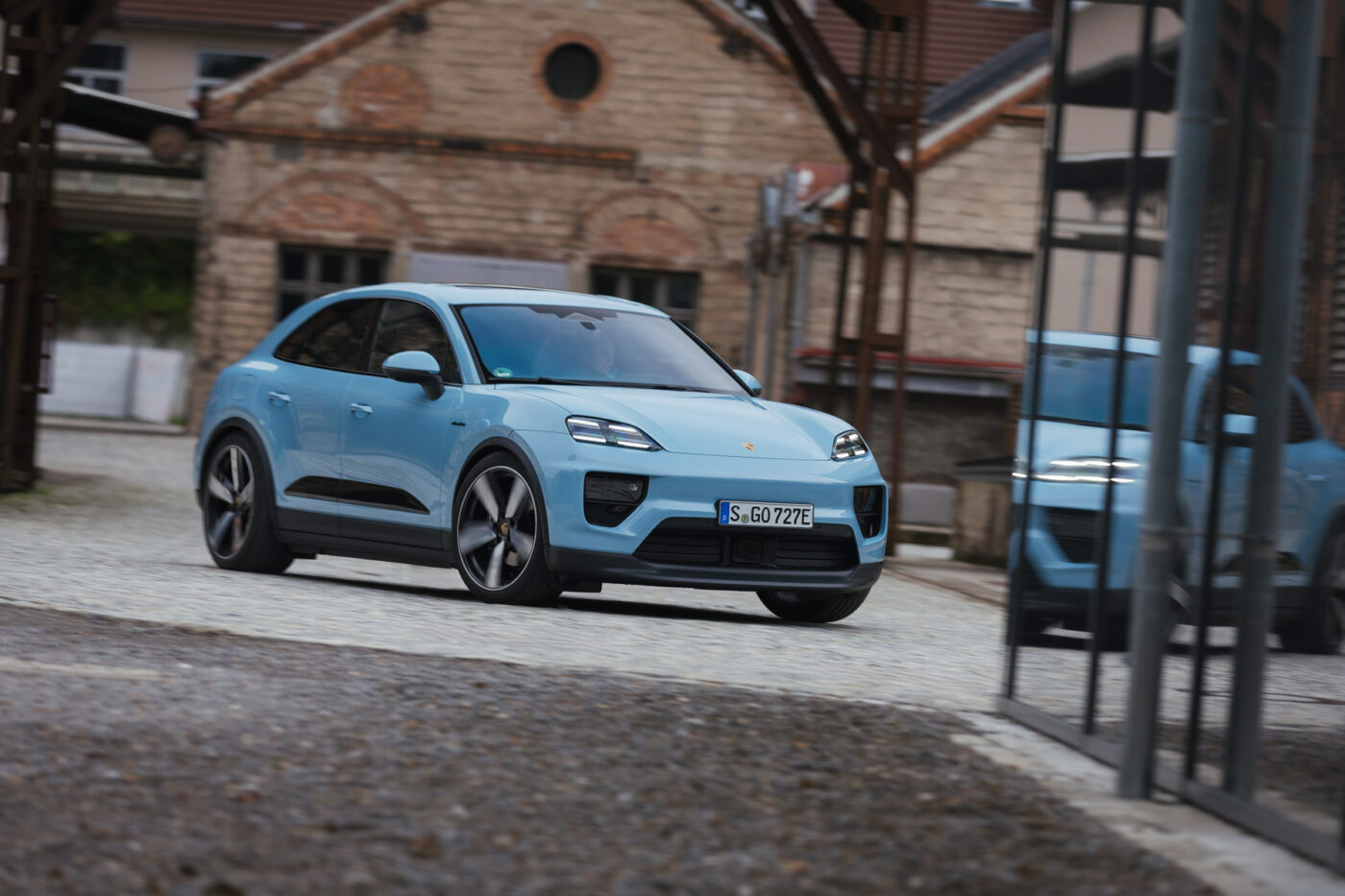
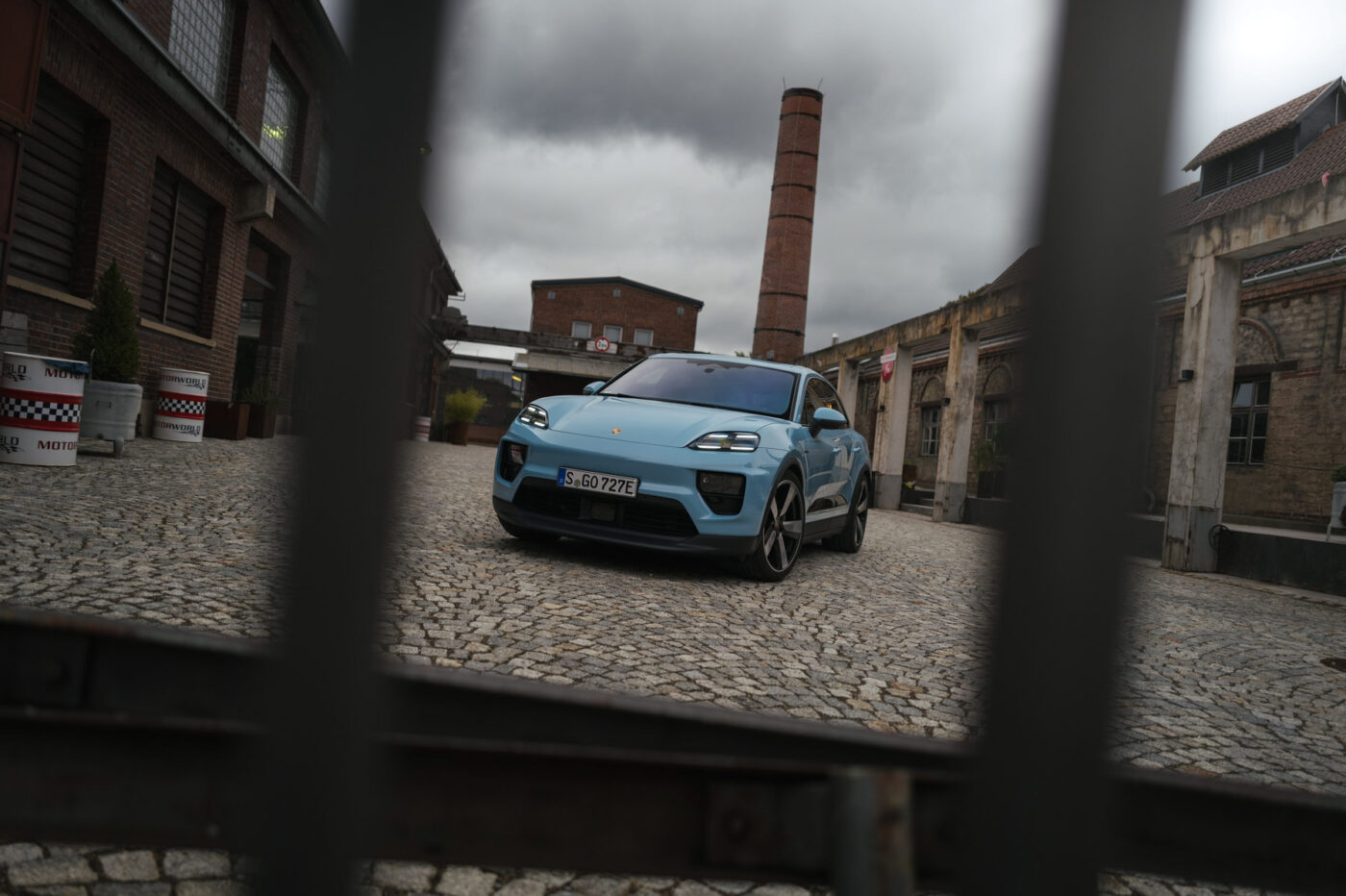
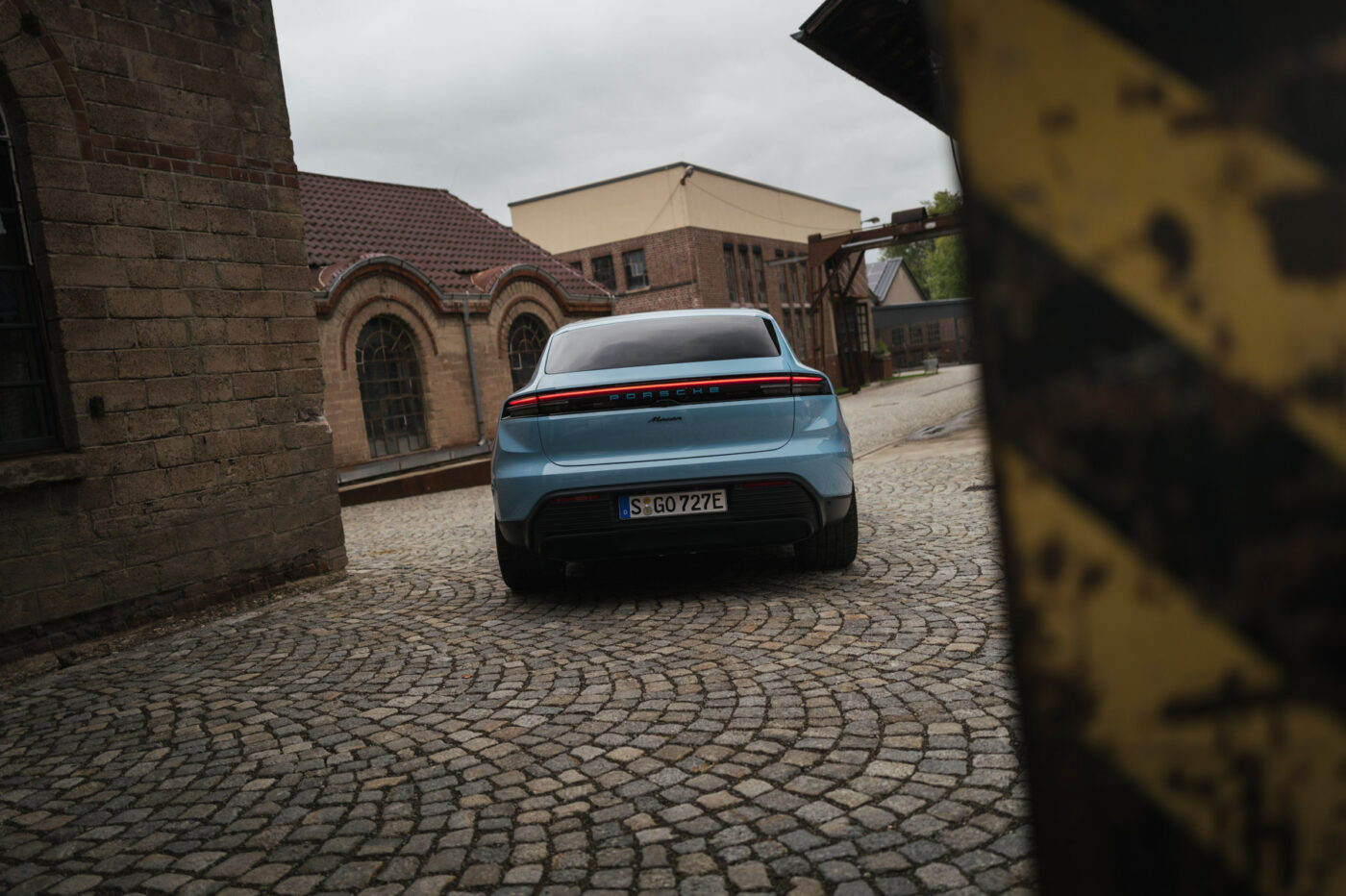
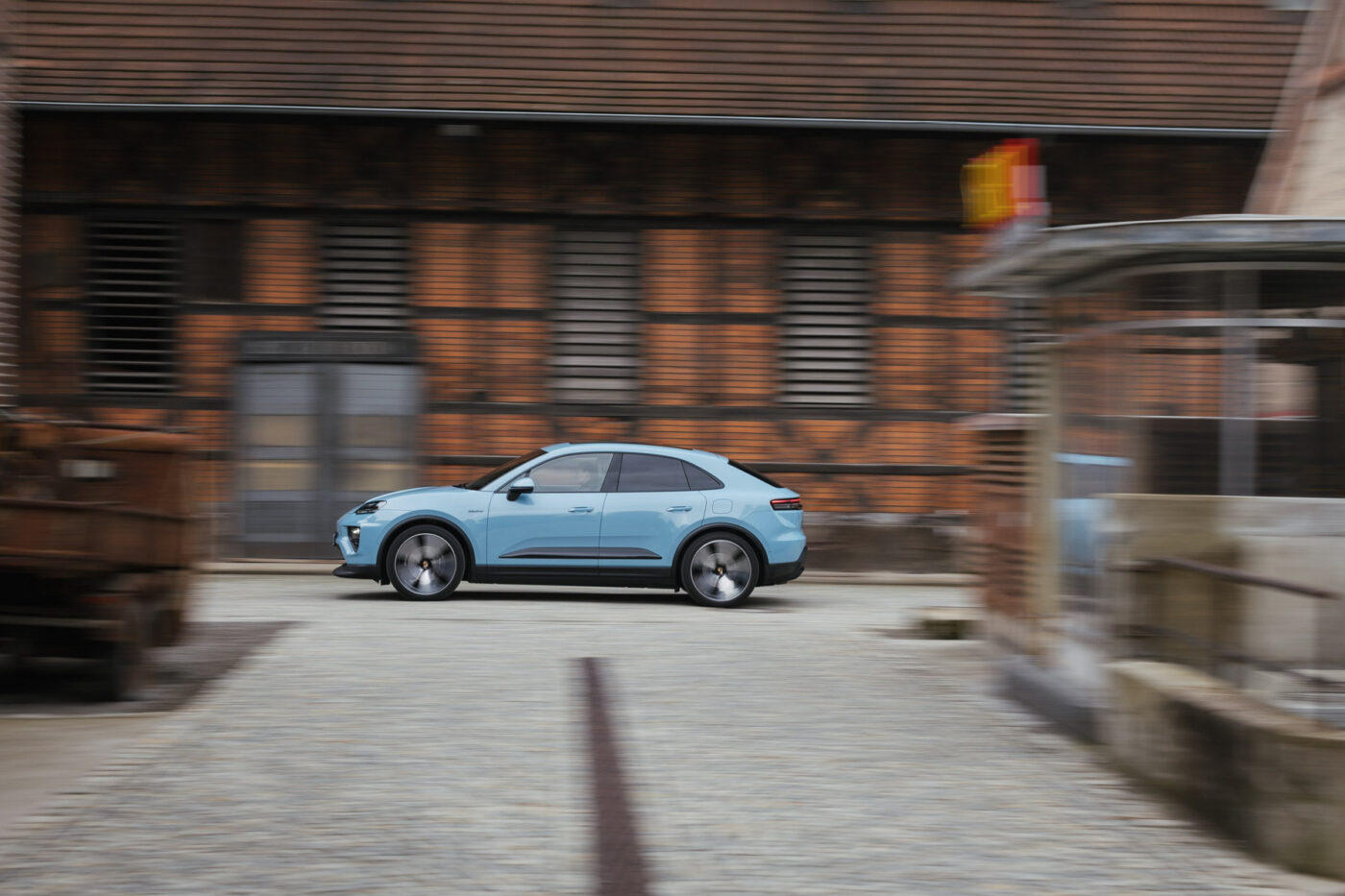
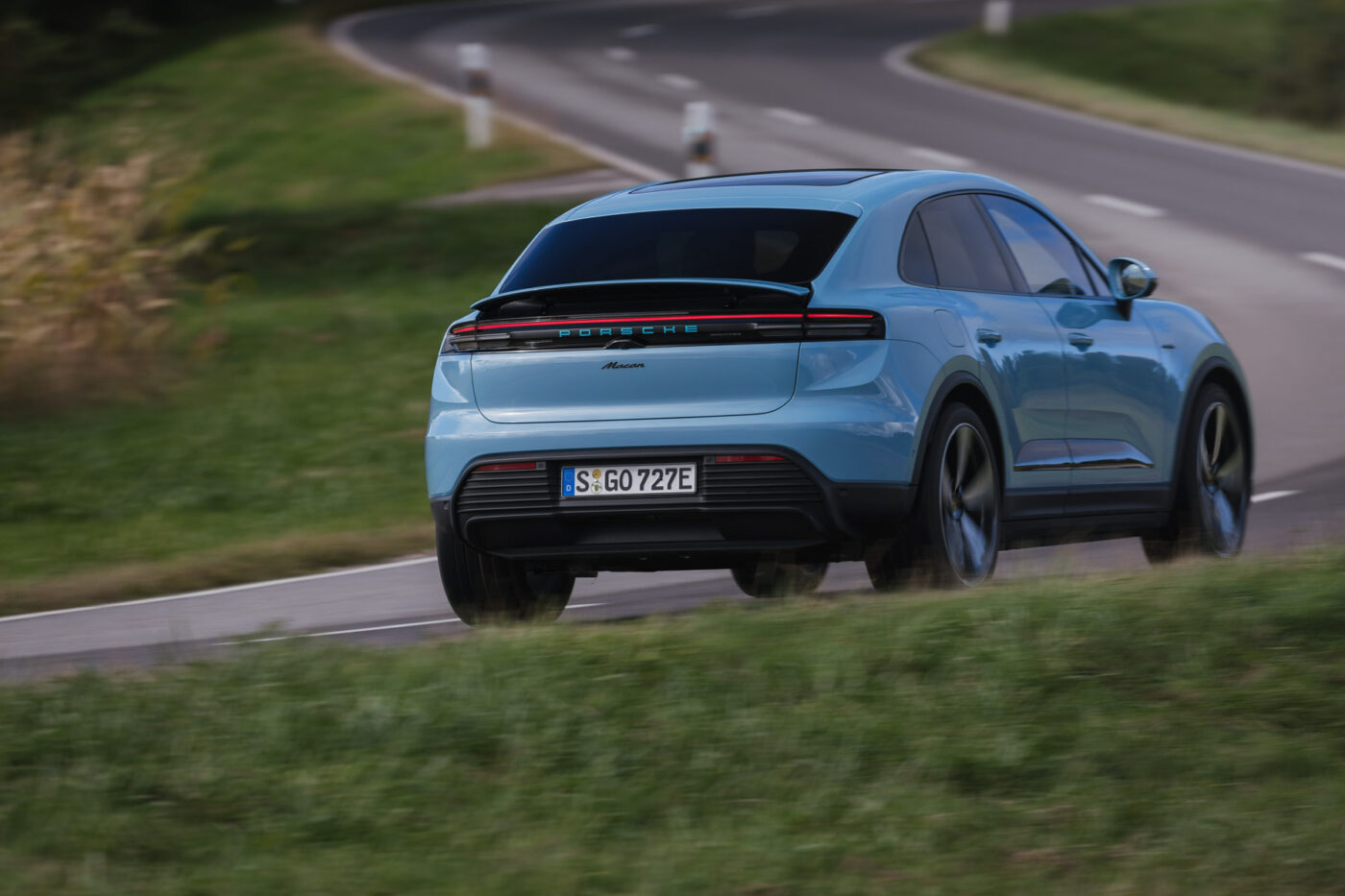
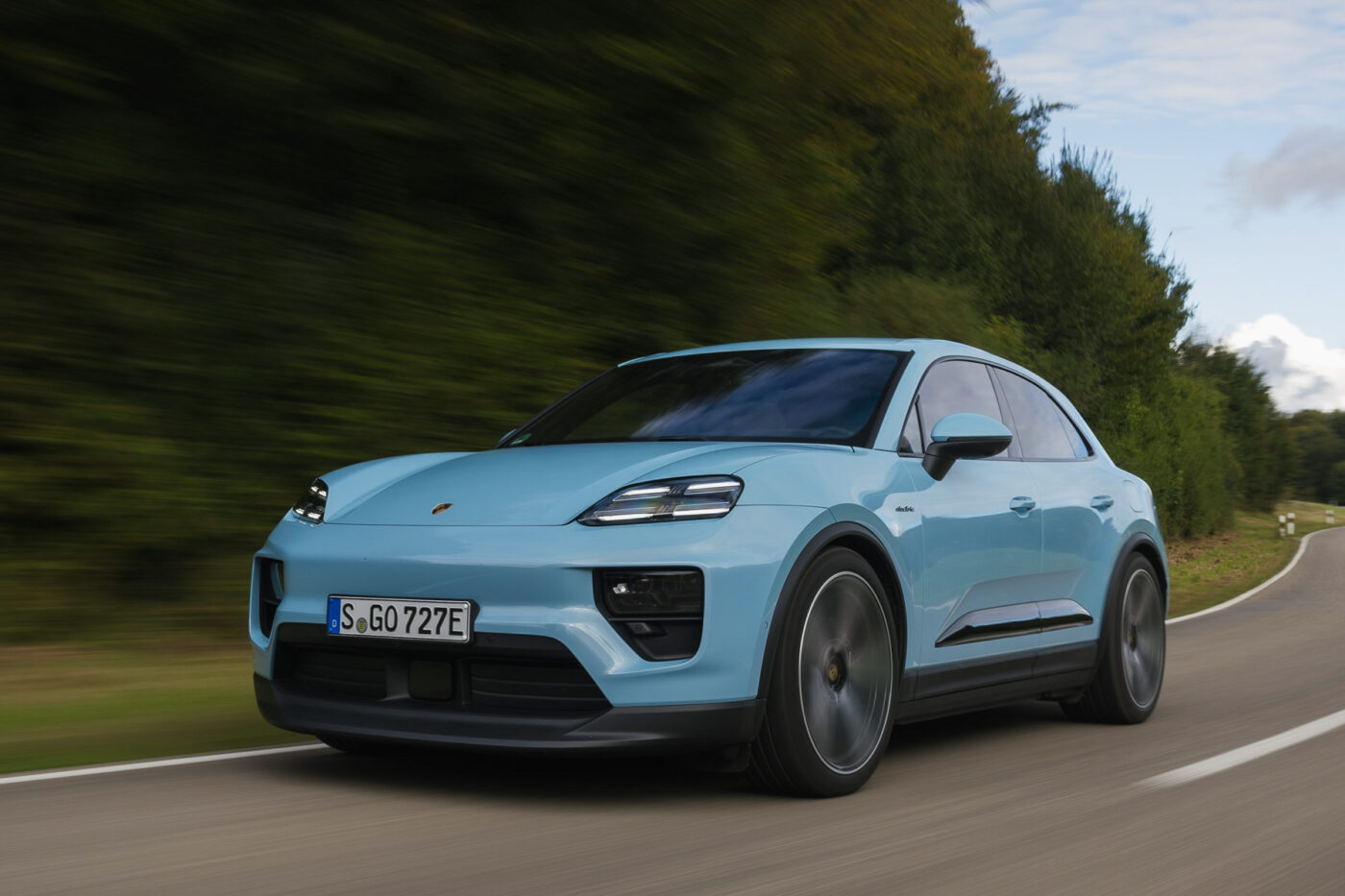
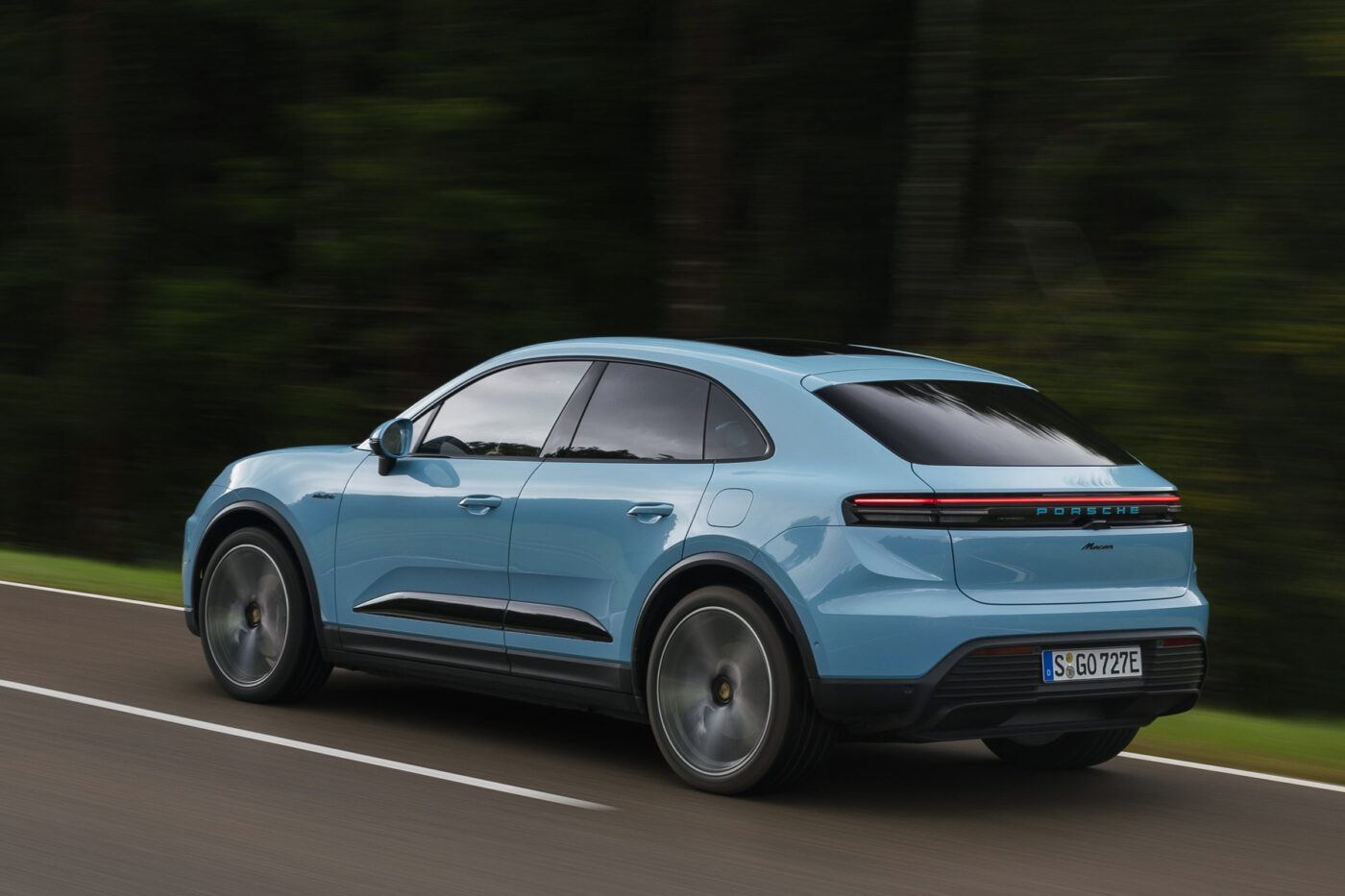
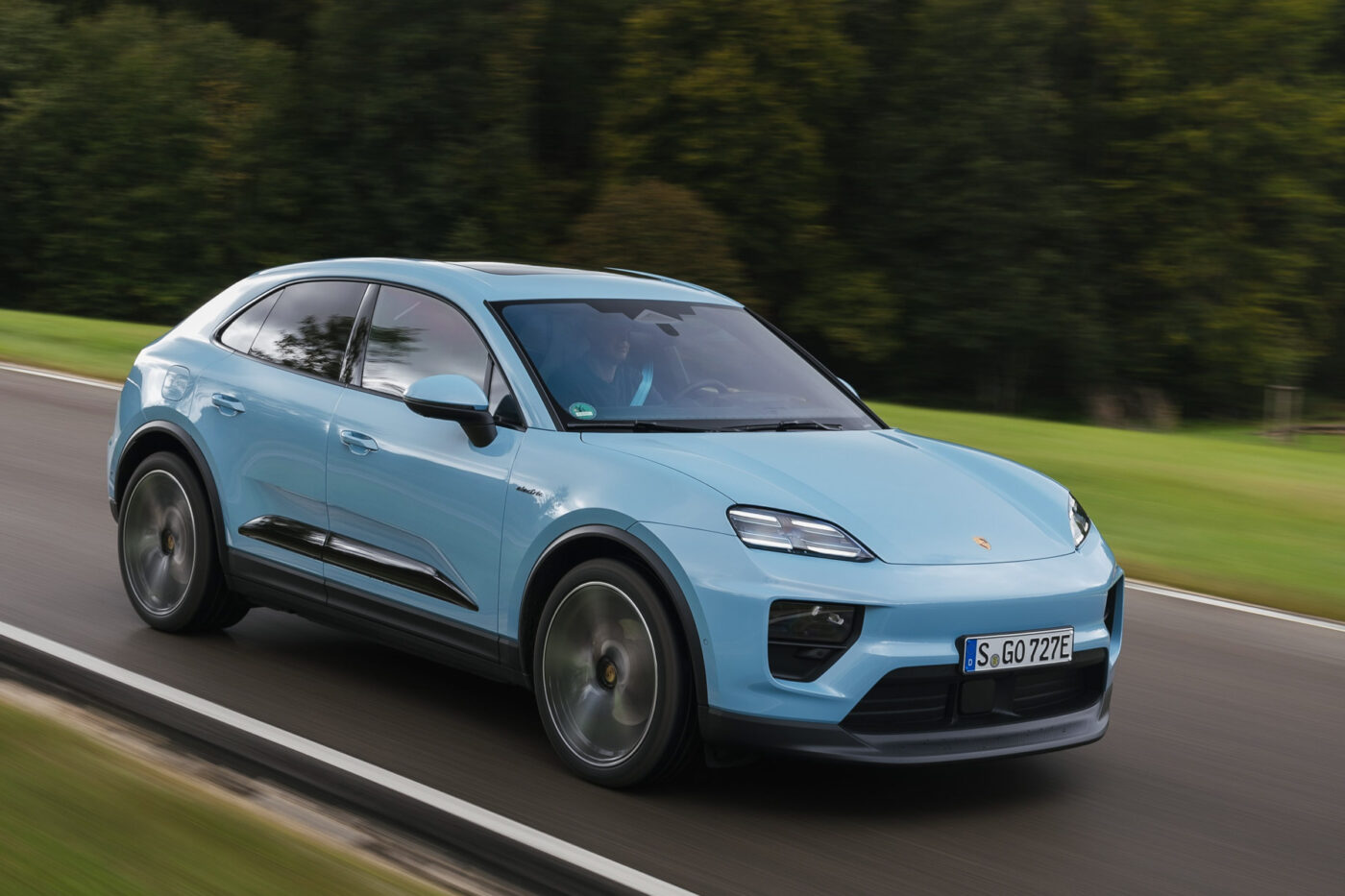
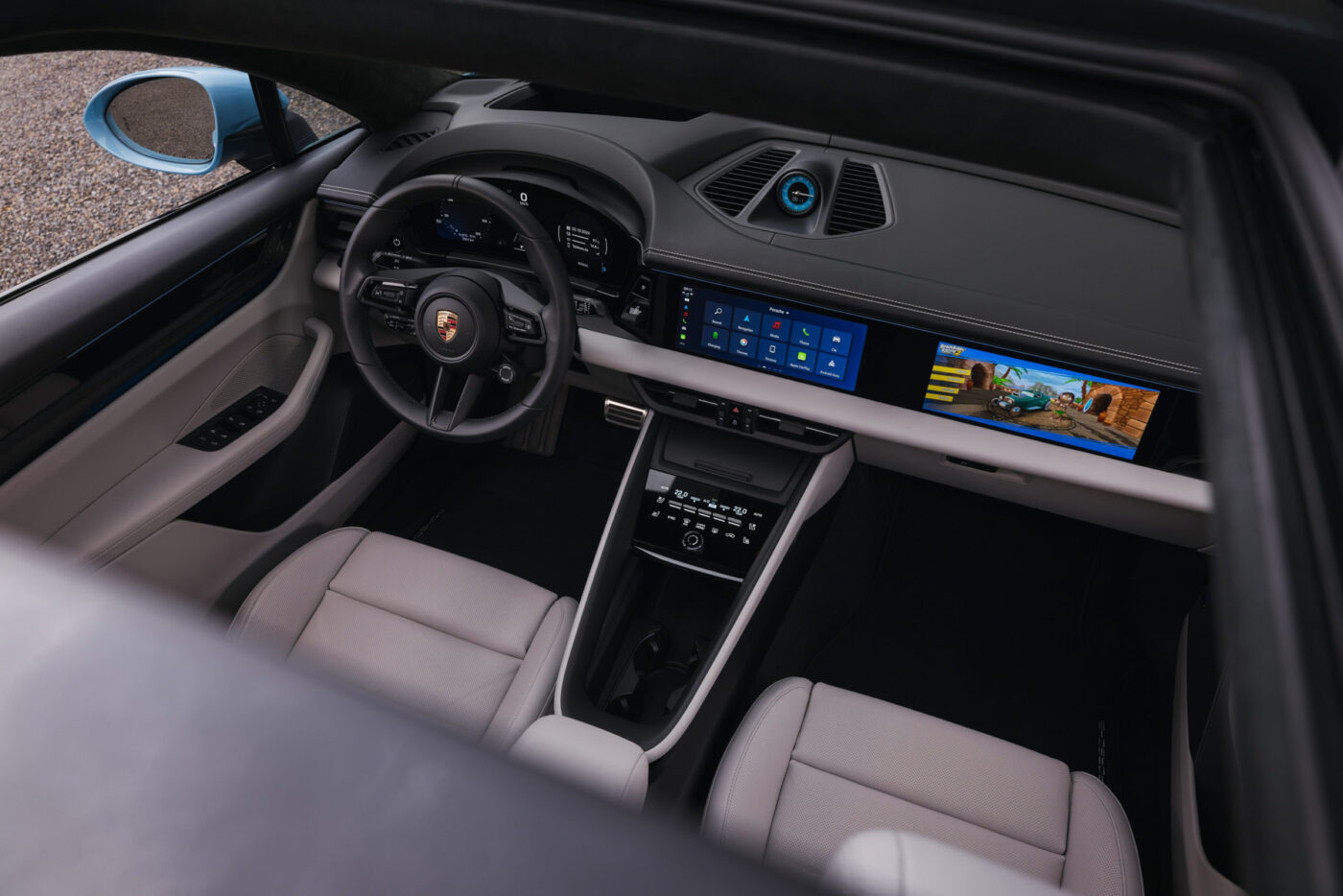
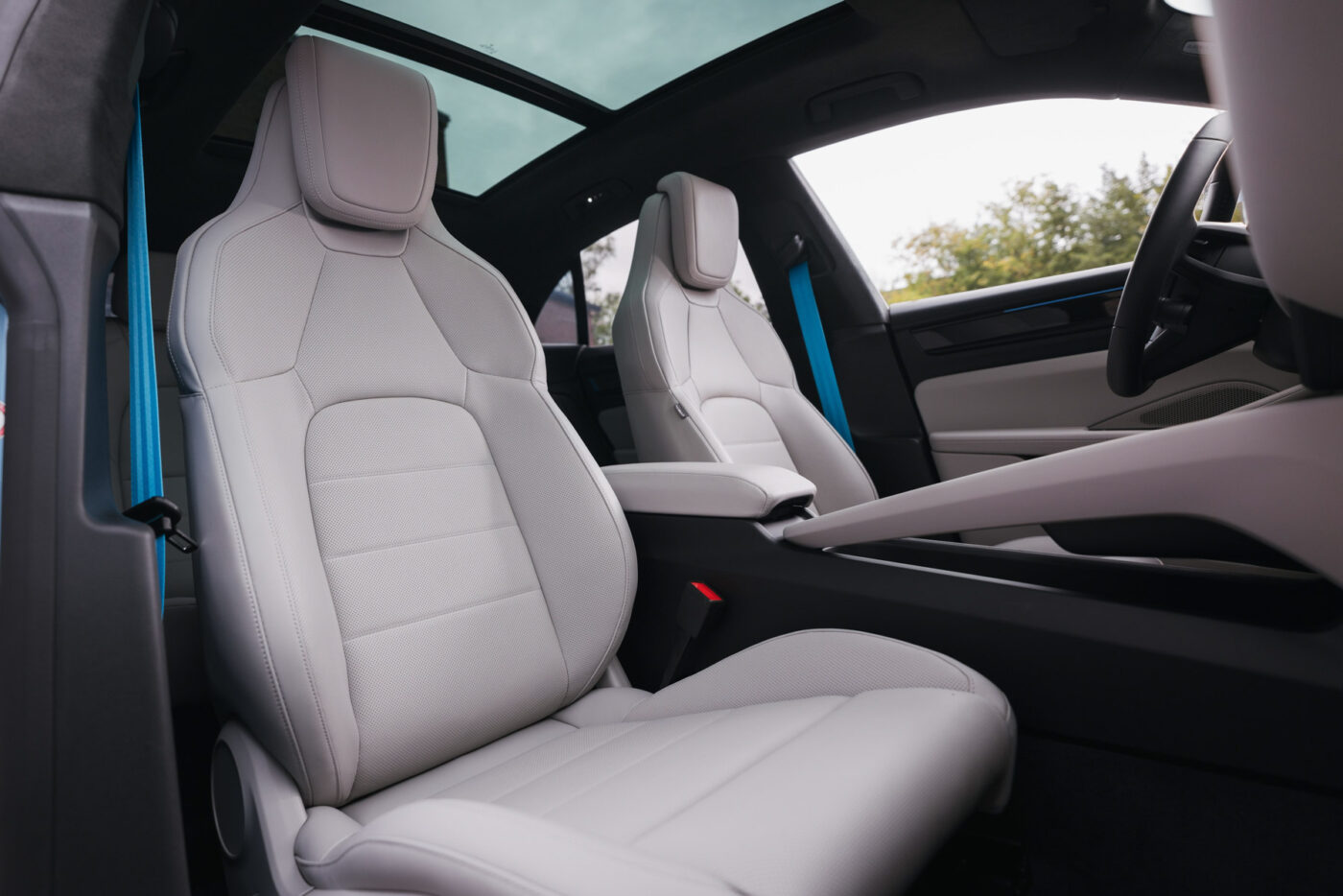
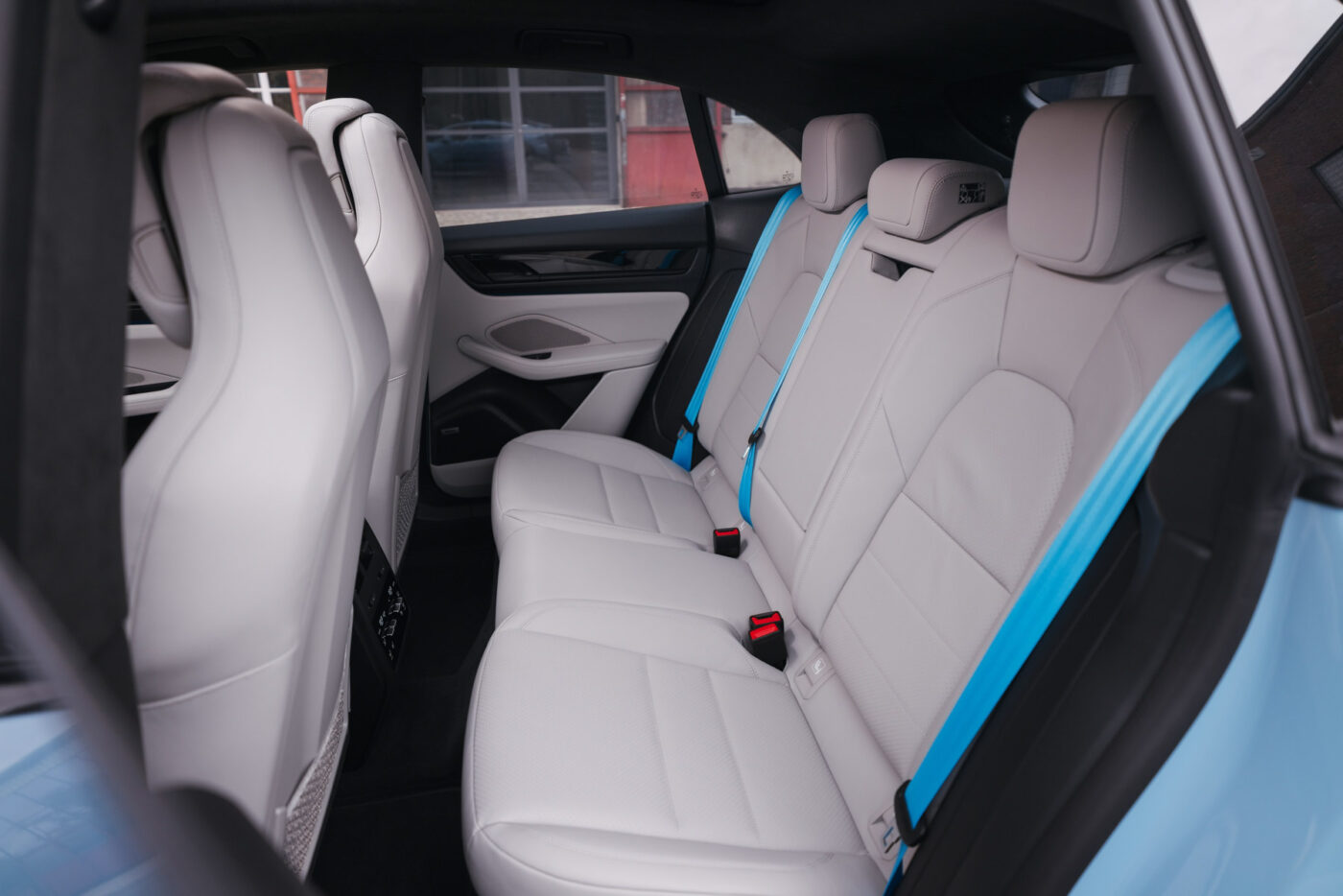
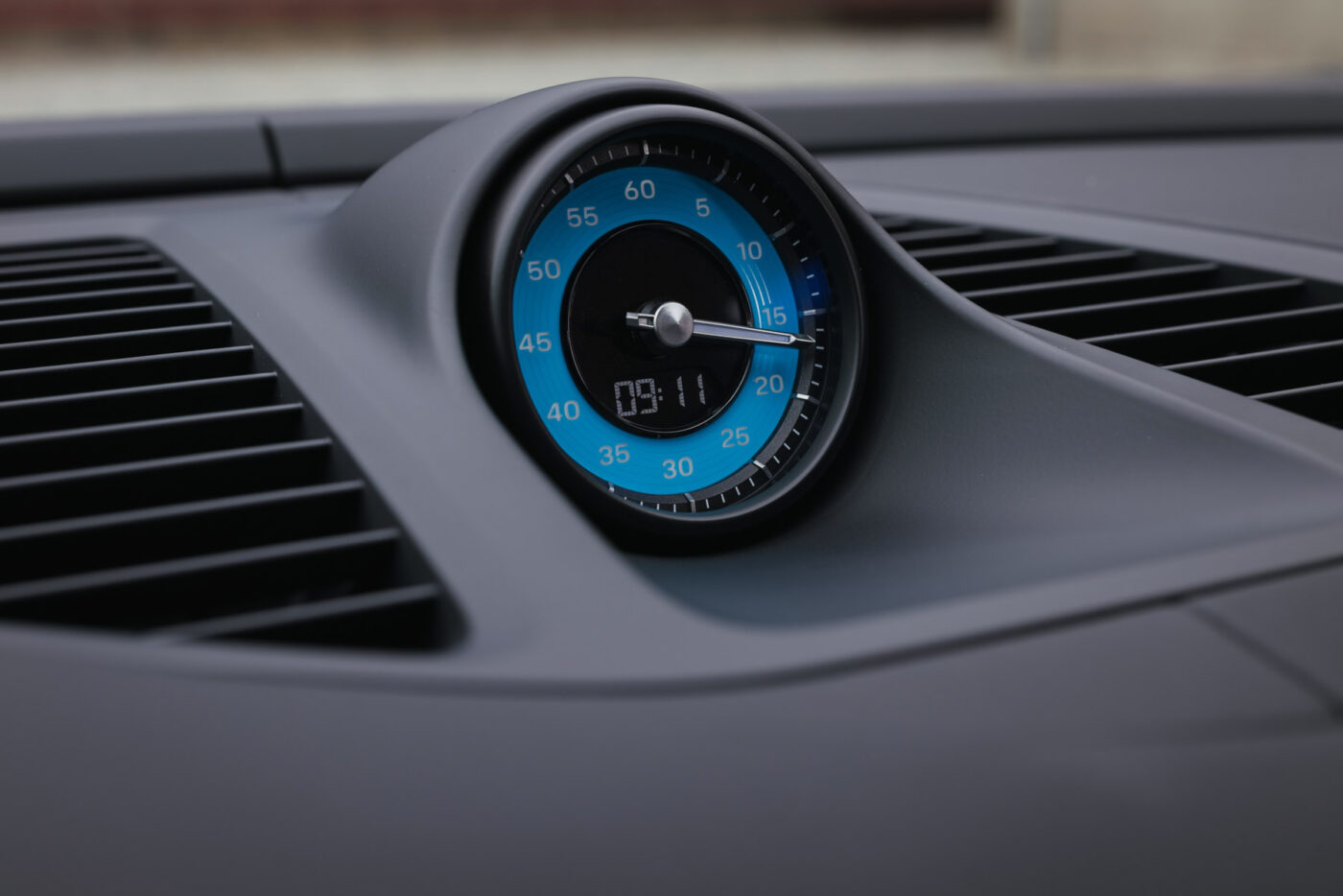
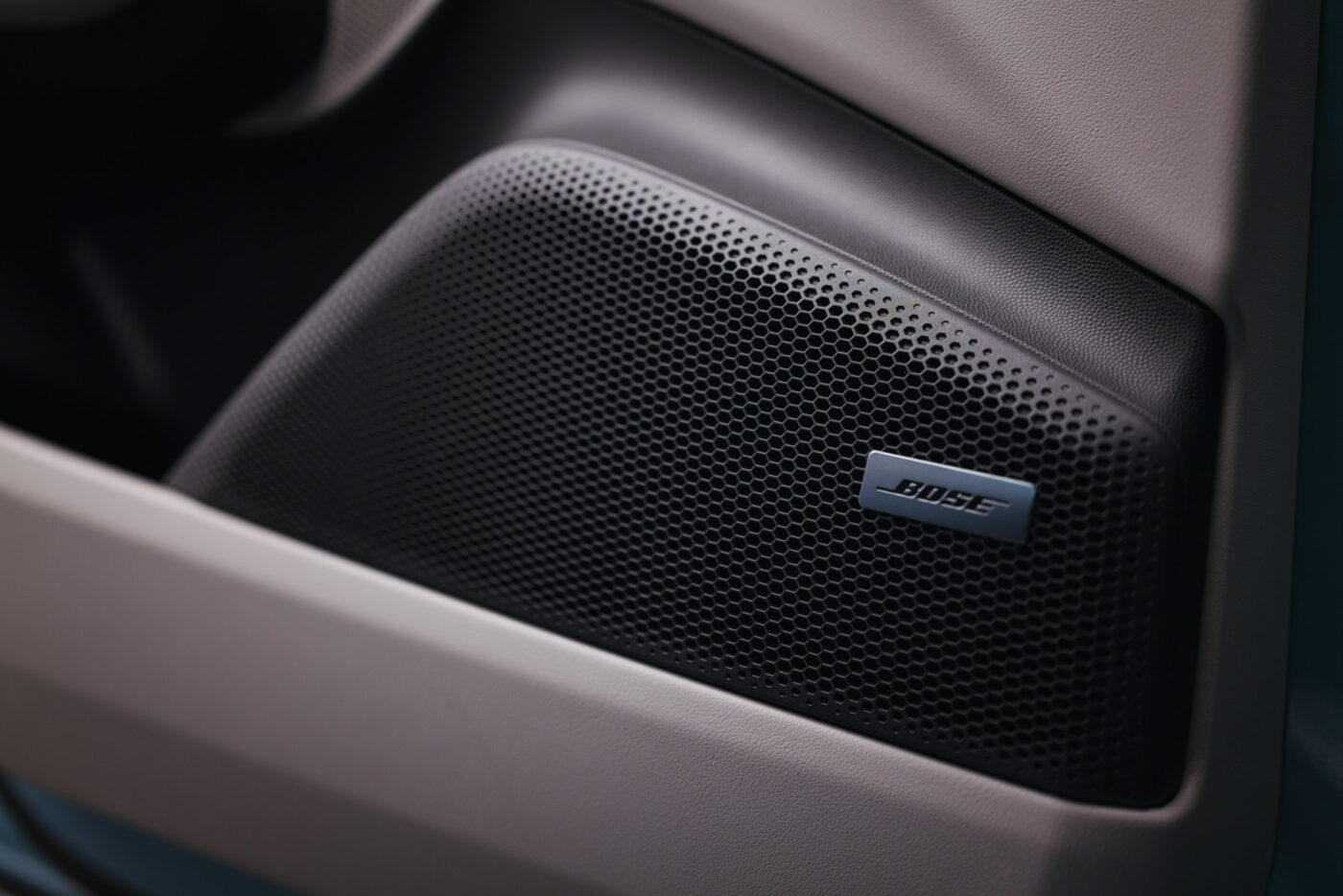
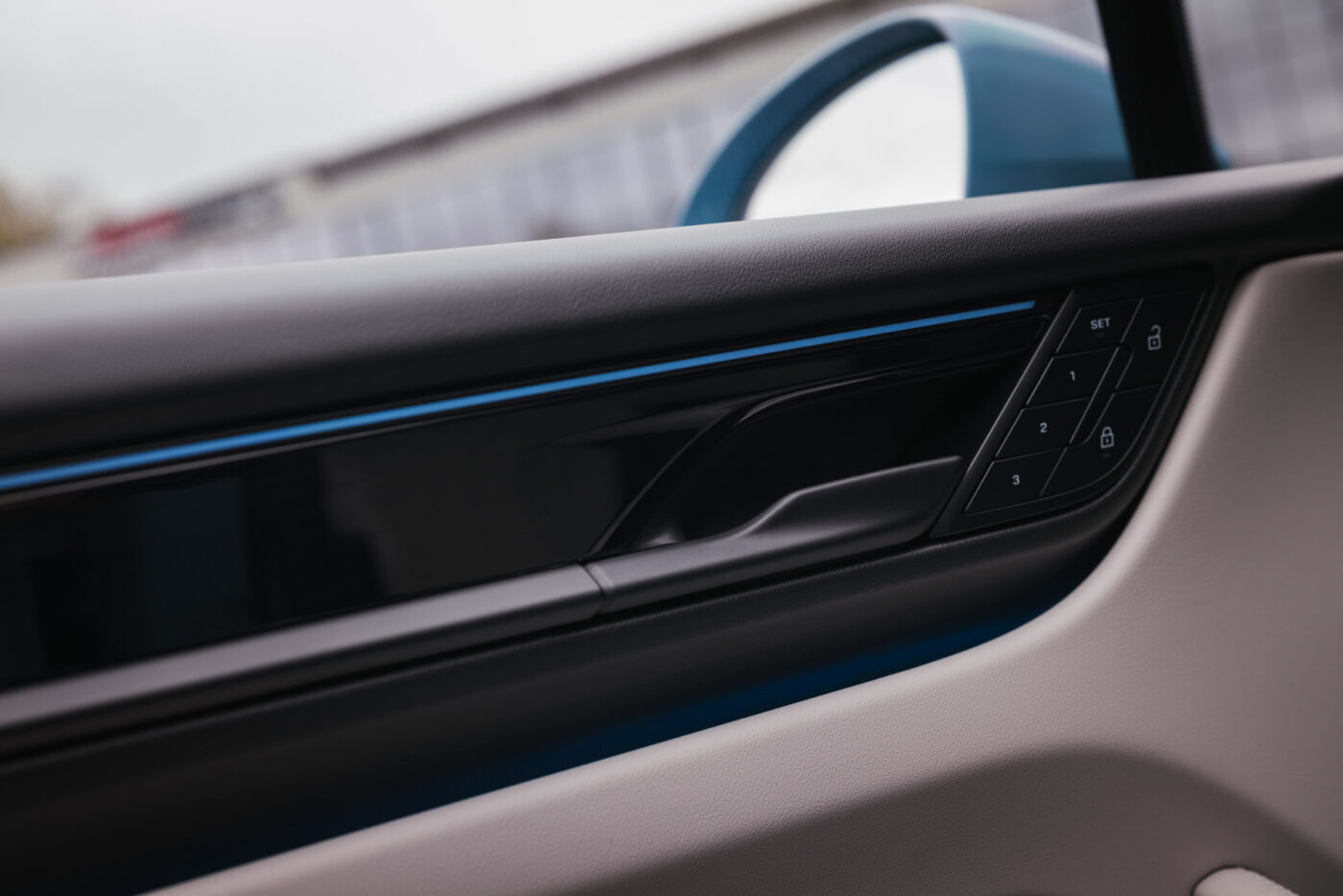
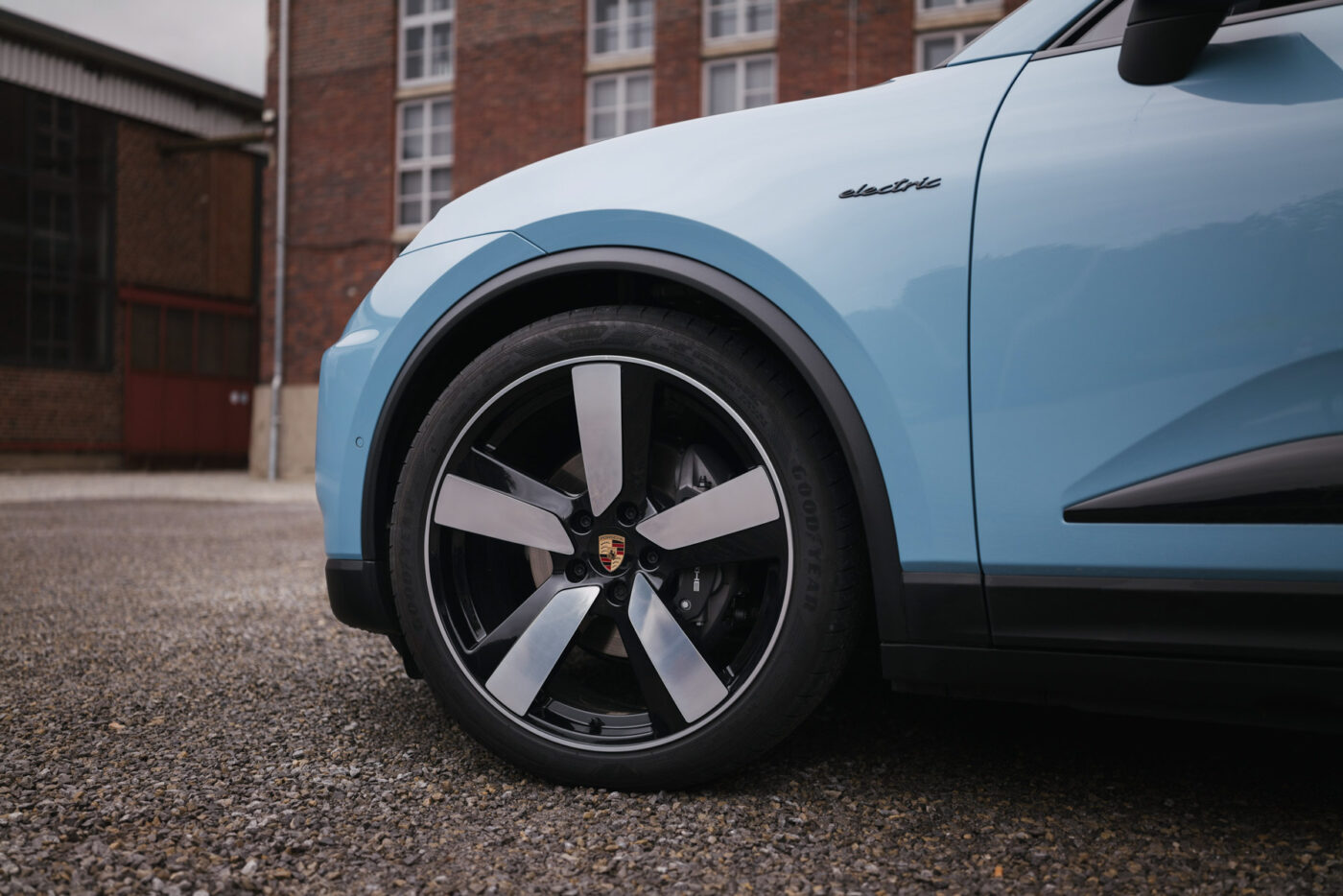
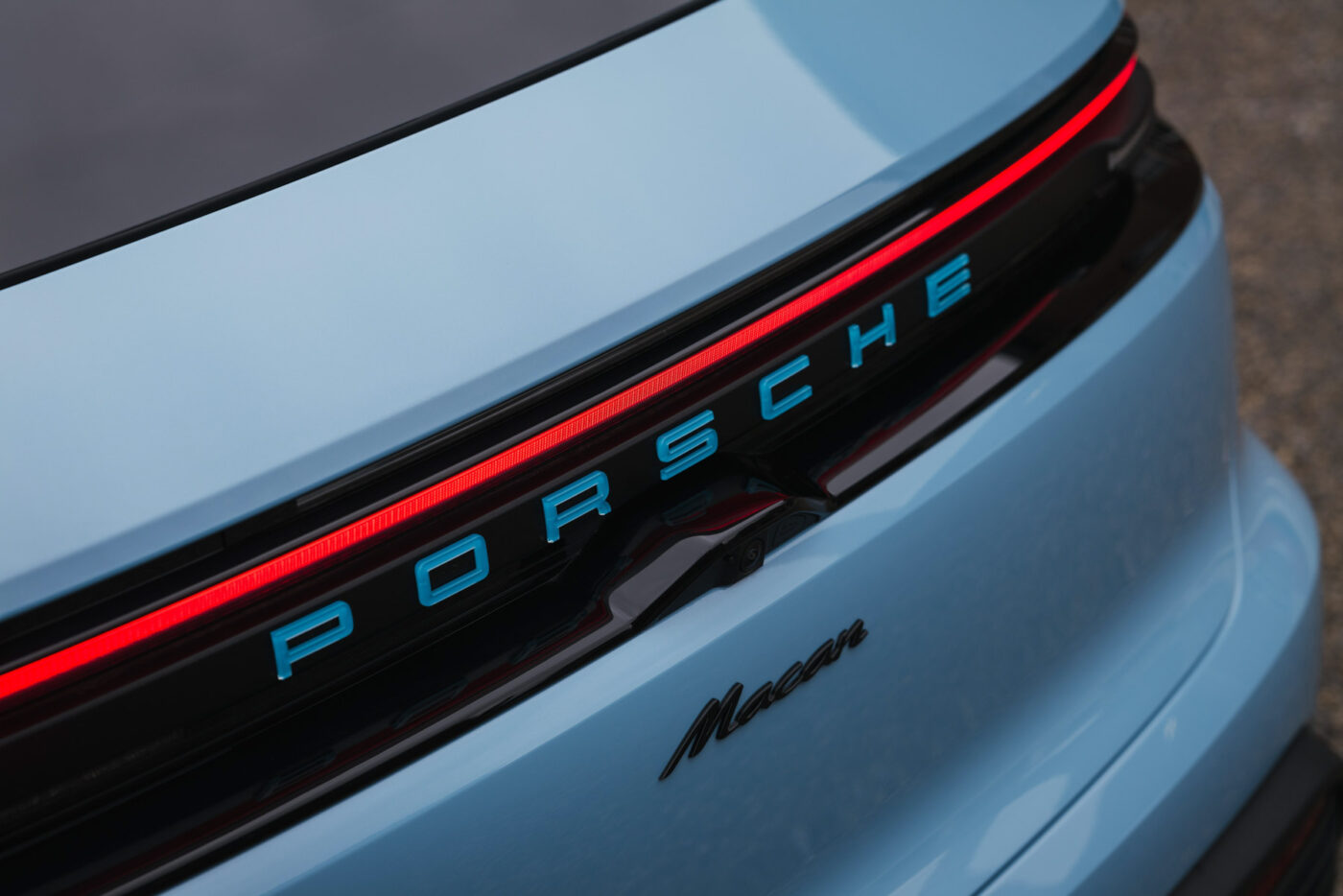
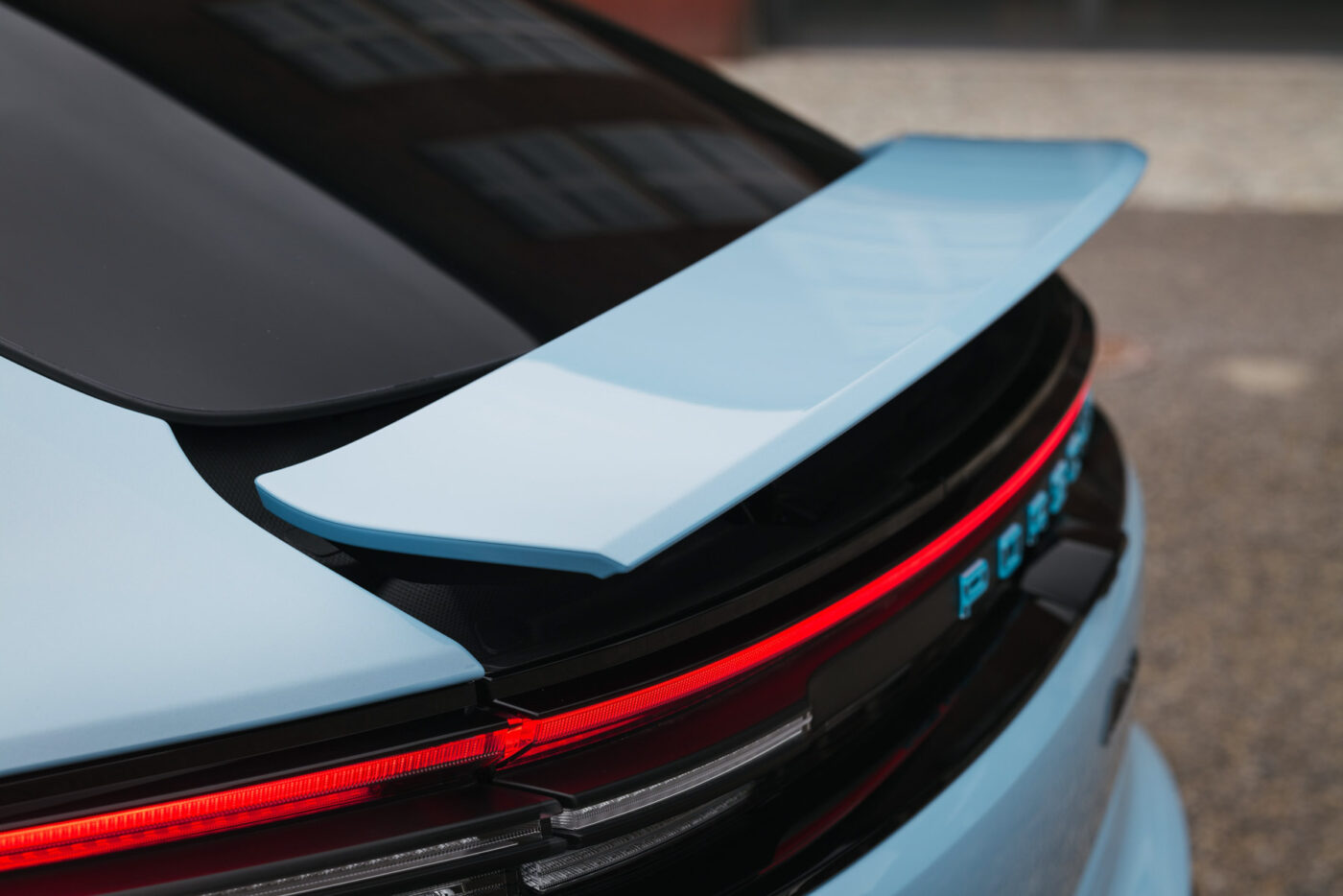
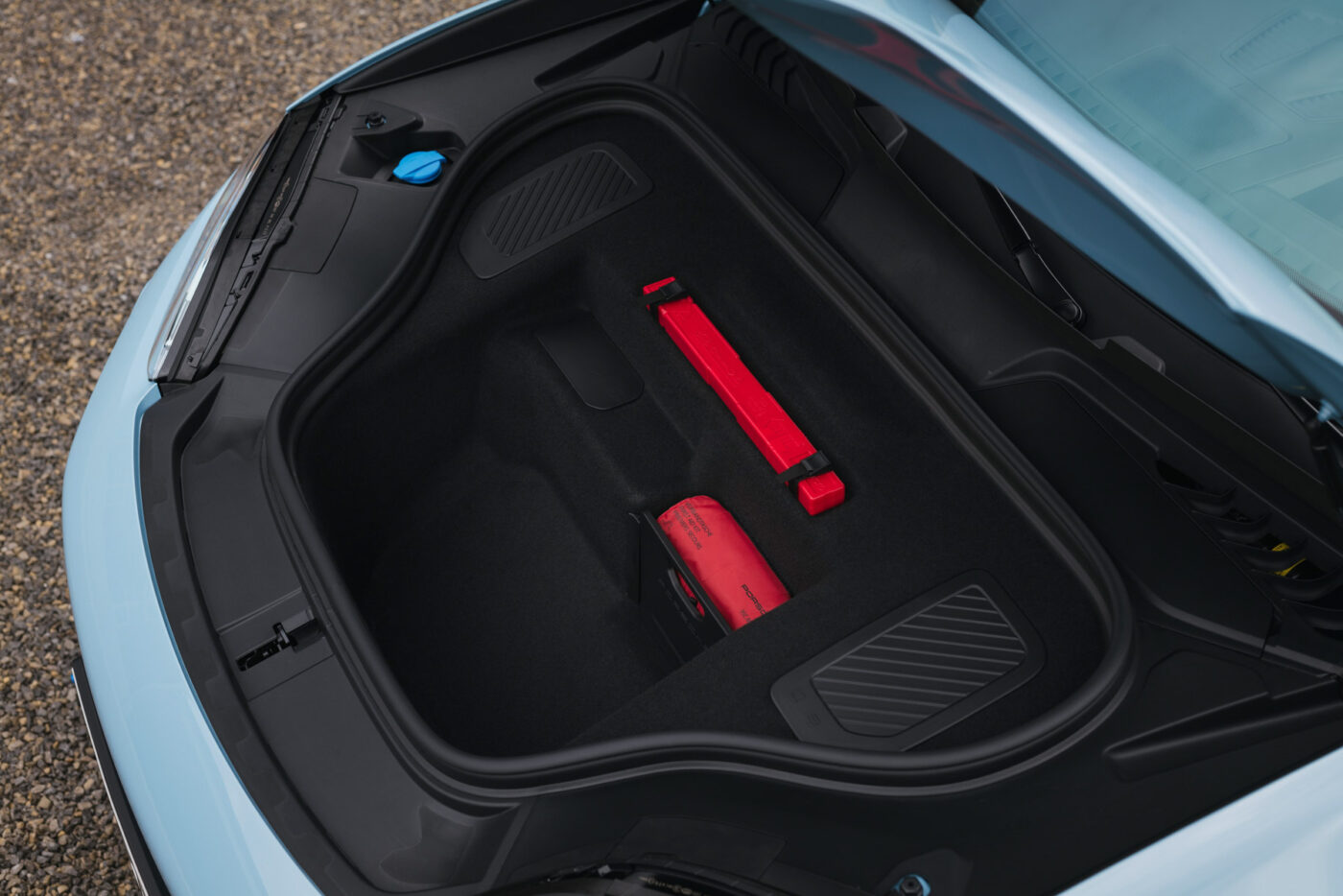
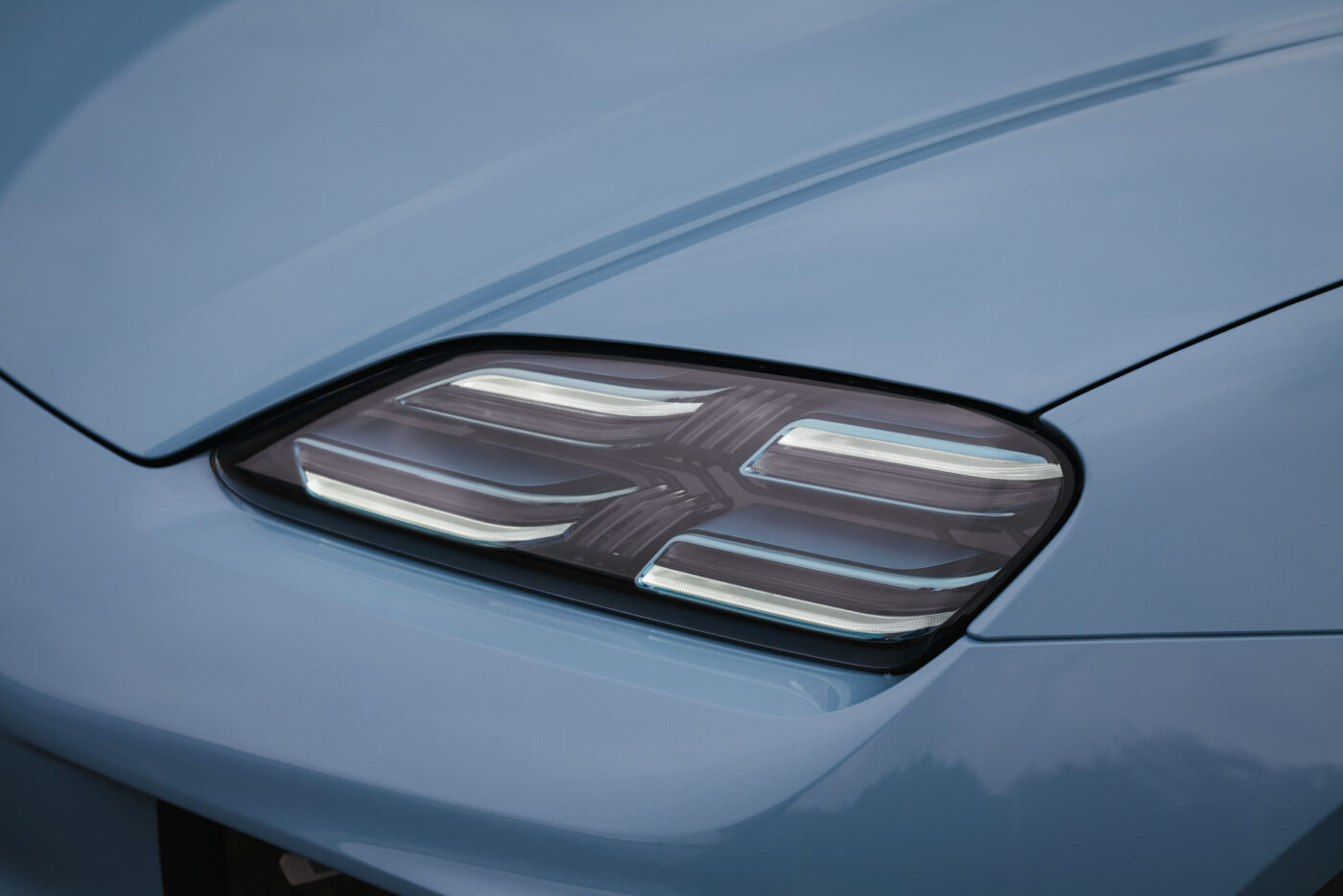
On the country roads south of Stuttgart, Germany, it quickly becomes clear what Porsche means by this: the chassis is one of the car’s highlights, at least if you ordered the optional PASM air suspension (2,653.70 euros). Despite the 22-inch rims (‘Macan Sport wheels’ for €4,117.40), the Macan absorbs almost all bumps cleanly, and even manhole covers are no problem with the large rims – Model Y drivers know what I am talking about. With just one click of the drive mode dial, the Macan becomes a sportscar, at least as much as is possible for an SUV. The steering is very precise, the feedback excellent, and so is the grip. The Macan also puts every one of its 250 kilowatts to the ground well. And with the optional rear-axle steering (1,856.40 euros), it is highly manoeuvrable when parking, manoeuvring, and in tight bends. But you can also see why the 80,700 euros is more of a theoretical value. And the test car was not even fitted with the most expensive rims from the catalogue.
In addition to the rear-wheel drive model, Porsche presented the new Macan 4S at the event, intending to close the ‘gap’ between the 285 kW Macan 4 and the 430 kW Macan Turbo. It uses an identical front engine to the other two all-wheel-drive models but combines it with a third version of the PSM in the rear – it has a diameter of 230 millimetres and an active length of 150 millimetres, as well as a pulse inverter with 600 amps. That results in a total of 330 kW or 380 kW in overboost and 820 Nm in the datasheet.
| Macan | Macan 4 | Macan 4S | Macan Turbo | |
|---|---|---|---|---|
| Drive | RWD | AWD | AWD | AWD |
| Output | 250 kW | 285 kW | 330 kW | 430 kW |
| Output (Overboost with Launch Control) | 265 kW | 300 kW | 380 kW | 470 |
| Torque (with Launch Control) | 563 Nm | 650 Nm | 820 Nm | 1,130 Nm |
| Top speed | 220 kph | 220 kph | 240 kph | 260 kph |
| WLTP range | 641 km | 613 km | 606 km | 591 km |
| Battery (net) | 95 kWh | 95 kWh | 95 kWh | 95 kWh |
| Charging capacity DC | 270 kW | 270 kW | 270 kW | 270 kW |
| Charging time DC (10 bis 80 %) | 21 min | 21 min | 21 min | 21 min |
| Price | 80,700 euro | 84,100 euro | 90,700 euro | 114,600 euro |
The difference in performance compared to the rear-wheel drive model is immediately noticeable, but the driving pleasure changes little despite the 10,000 euro price difference. The 4S pulls away from the base model when accelerating and out of corners, but the ‘little’ Macan is at least as much fun in the bends. If not a little more, because in a direct comparison, the rear-wheel drive model seemed more harmonious. However, whether that was due to the 110-kilogram weight difference due to the second drive unit at the front, the different wheel/tyre combination or the off-road package, we cannot say for sure at this point. All Macan 4S models available at the event were equipped with the off-road package, which raises the ground clearance by ten millimetres to 195 millimetres in normal driving mode. In ‘special off-road mode,’ which is then activated, the Macan with the off-road package is even raised to 225 millimetres. Given the off-road use of SUVs, whether this is necessary (or more about the look with the more rustic front and rear apron) remains to be seen. For completeness, Porsche sees great advantages off-road compared to its combustion engine predecessor: as the electric motors respond up to five times faster, the control on rough surfaces is superior in the new model.
For most base model customers, other factors will probably be more important than the Macan’s capabilities over sticks and stones – the range, for example, as the rear-wheel drive model has the best WLTP value of the model series. During our test lap with the Macan, the conditions were not quite ideal with the onset of rain and increasingly wet roads. Although we made full use of the driving dynamics, the onboard computer showed a consumption of 20 kWh/100 km – as did the continuous counter, which also included the journeys of other journalists on that day. It appears to be quite realistic consumption under these conditions. That results in a calculated range of 475 kilometres. With a charge level of 49 per cent at the end of our test drive, the onboard computer still showed a remaining range of 228 kilometres.
When charging, the Macan offers a peak output of 270 kW, which should be achieved more frequently in practice thanks to numerous improvements – read more about this in our background article on the technology of the Macan. Porsche promises that up to a charge level of 55 per cent, more than 200 kW can flow into the battery, provided a correspondingly powerful charging station is available. During our test drive, we used a Hypercharger HYC300 with a charge level of around 55 per cent, which unfortunately had a faulty charging point. We were able to charge with 150 kW at the functioning charging point – which indicates a limitation on the part of the charging station; the Macan would probably have been able to charge a little more at this level. A detailed driving report with a charging curve and motorway consumption will follow later. However, the first impression is positive, measured against the emphatically sporty design of the Macan.
An improved e-route planner complements the charging technology. When we requested a test route to Berlin in Metzingen, south of Stuttgart, with the battery half full, a fully planned route with three charging stops was provided within a few seconds. Sounds like a lot at first, but at second glance, it makes sense: on the one hand, with a full battery, you would certainly only have needed two charging stops on the way to Berlin – but there are also spontaneous journeys before which you can’t charge to 100 per cent as planned. The Macan knows its charging curve very well: it does not charge rigidly to 80 per cent (which would take 21 minutes), but often only to 60 or 65 per cent. Because the charging power is still very high and continues to decrease as the charge level rises, three short charging stops after Berlin are simply faster than two longer ones. None of the charging stops planned by the system were longer than 13 minutes. However, if you charge for 20 minutes during the first charging stop (because you just needed a longer break), the subsequent planning is adjusted.
In terms of charging planning, the Macan software worked extremely well during the first short test. There are also well-thought-out details: for example, the calculated route to Berlin only displayed the utilisation of the first charging park in real-time (6/8 charging points free). Of course, displaying this for the other two charging stops would also be possible, but it would be pointless – the occupancy will change until you reach the charging park 450 kilometres away.
The rest of the software made a decent but not outstanding impression. After getting used to it, the operation was possible without any further problems, and the software ran reliably. However, the test period was very short, so this is only of limited significance. From the customer’s point of view, none of the functions really stood out. There is no question that the Macan offers what some customers in this price class demand – such as good smartphone integration and access to services and apps they also use outside the vehicle. Porsche’s own App Centre and opening it up to content from other providers was certainly a big step for the company internally. For customers, however, it is now a matter of course that they can also use their Spotify or Tidal account via the car’s stereo system.
Sporty: yes – practical: well…
Speaking of stereo system, it can also influence the available space in the car, albeit in theory. As with the Bose system, which is available at extra cost, the subwoofer is installed under the boot floor (as with the Burmester system, which can be ordered later), and the compartment there can thus not be used for luggage. However, it is really only a flat shelf and not a separate sub-trunk, like in the Model Y.
Even though the 4.78 metre-long Macan is certainly comparable with the 4.75 metre-long electric bestseller from Grünheide, they are two worlds apart. Anyone expecting similar exterior length and similar interior space will be disappointed. The Porsche is not cramped, but it is significantly less airy. The focus was on sportiness, not on maximising utility.
The legroom for passengers in the rear seats, in particular, is not as generous. From the frunk (84 litres) to the boot (540 litres) to the maximum load volume with the rear seat backrests folded down and roof-high loading (1,348 litres), the Macan is not that spacious. However, it has a higher towing capacity of two tonnes than the Model Y with its 1,600 kilograms.
Conclusion
The designation ‘base model’ doesn’t really do justice to the Macan without further additions to the name. Yes, it is the cheapest and weakest model in the series, but it is by no means a slimmed-down version that is only offered at a PR-emphasized low price but is hardly ever ordered. If you don’t need all-wheel drive, save yourself the €4,000 difference to the Macan 4 – or invest in additional equipment. Because that is still the big criticism: even features that should be standard in this price range (heated seats, etc.) still cost extra. And the things that are really fun cost even more.
But one thing has been achieved: Porsche has developed a really fun, very sporty electric SUV – even with ‘only’ 250 kW.



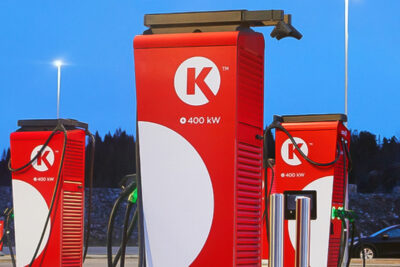
1 Comment